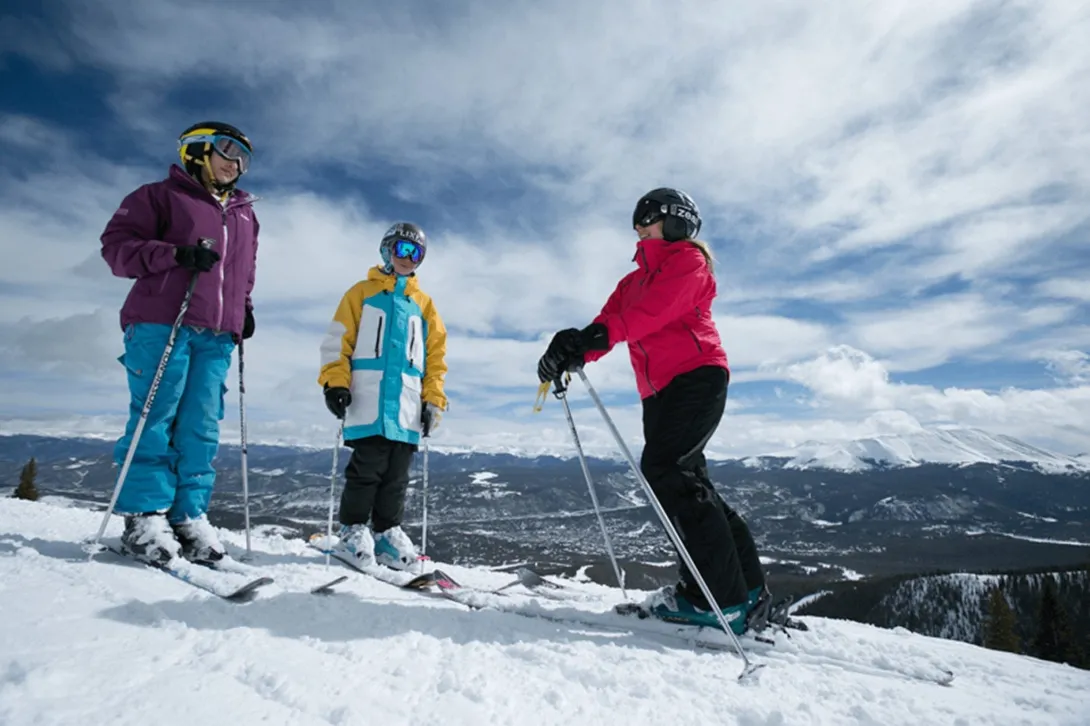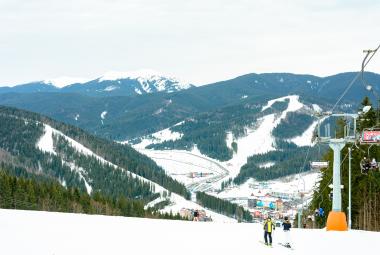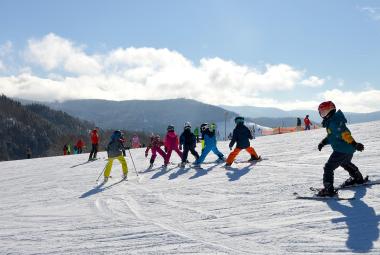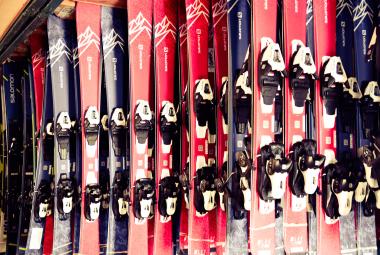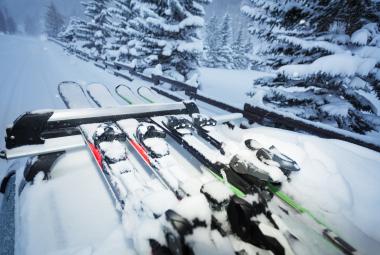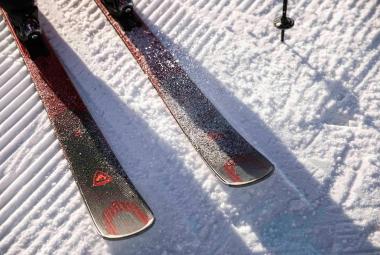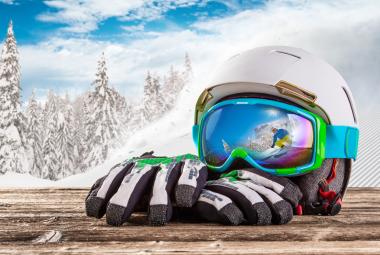There are so many varying types and lengths of skis out there and we know that trying to pick the right ski can seem like an overwhelming task. But it doesn’t have to be!
Today we’re talking about the difference between short vs long skis, the benefits and drawbacks of each, and how to pick the right ski length for you.
Keep reading to learn more about short vs long skis so you can make an informed decision when renting or purchasing skis.
Short Skis
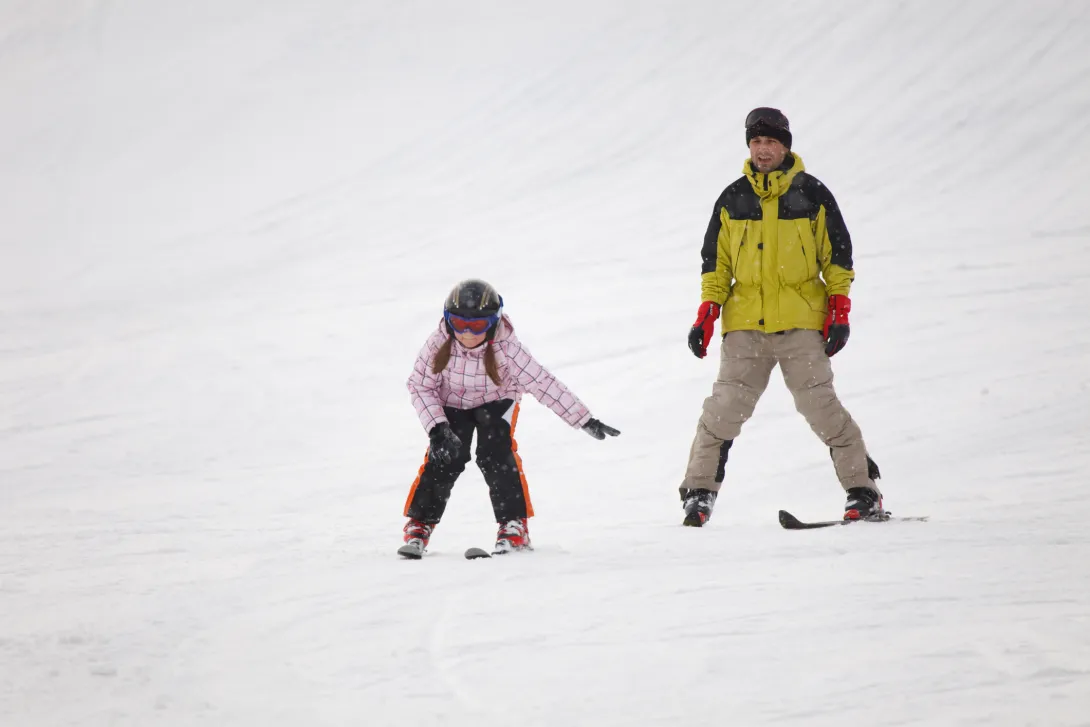
Benefits of Short Skis
Stability & Control
With shorter skis it’s easier to maintain stability at slower speeds, making them easier to control and get comfortable in than longer skis. They are able to react to your movement quicker, so you’re able to turn or slow down much quicker than you would in a longer ski.
This makes them better for skiing bumps (moguls) and tighter terrain.
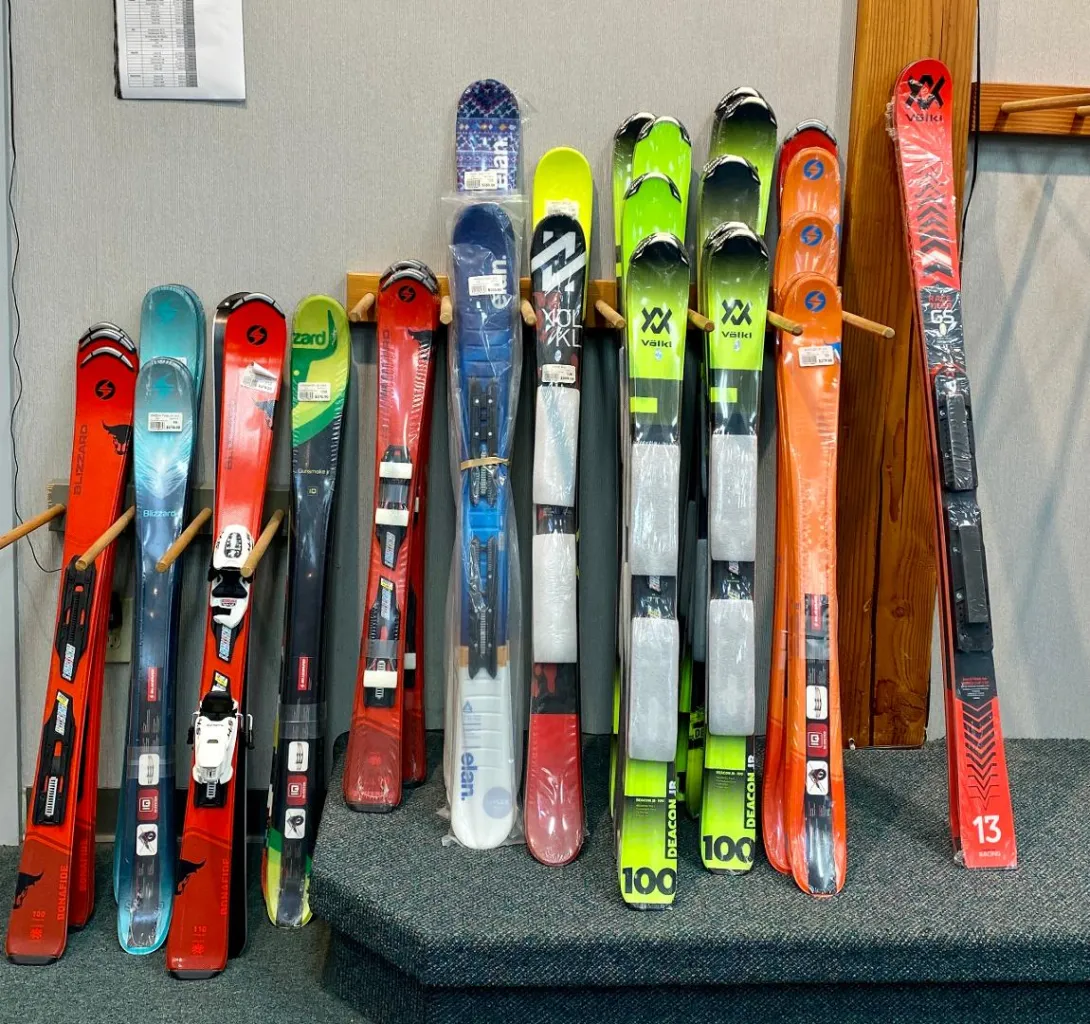
Turning Radius
Short skis have a shorter turning radius, making it easier to make sharp turns and overall learn how to turn easier.
Drawbacks of Short Skis
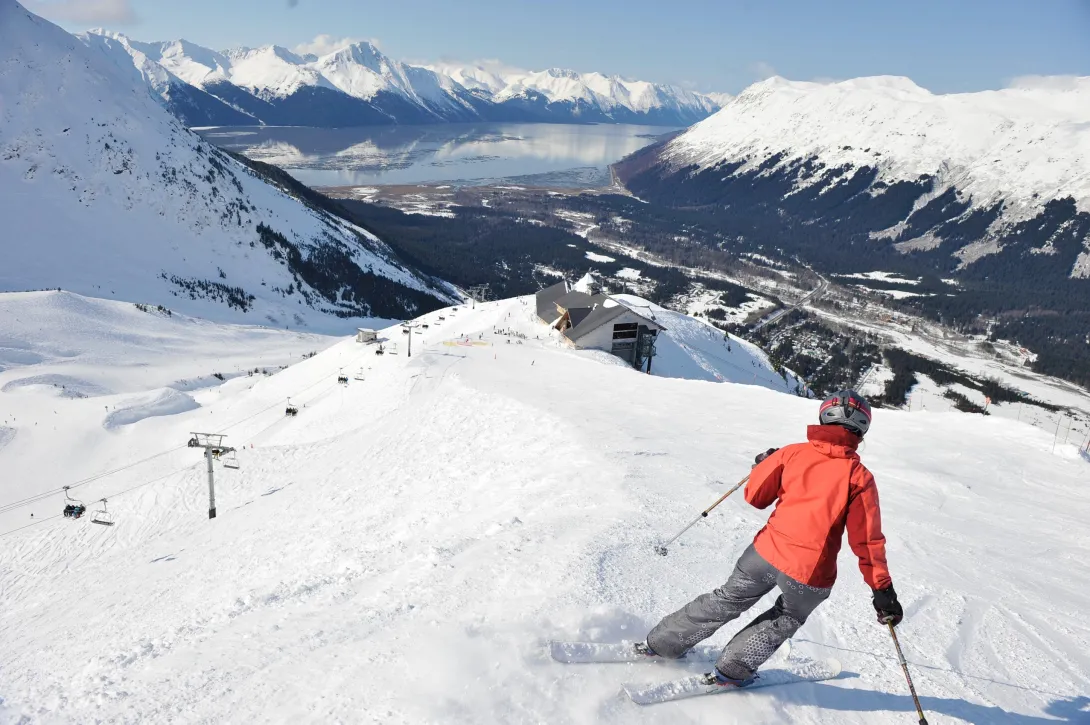
Since there is not as much weight distribution in short skis, they have less stability at higher speeds.
It’s also harder to make longer S-shaped turns in shorter skis at high speeds, making it easier to turn too sharply. This can lead to more severe injuries in the instance that the skier loses control.
Because short skis cover less surface area, they tend to sink rather than float in powder. This can make skiing more challenging if you’re in backcountry terrain or primarily skiing in deep or fresh powder.
Who Should Use Short Skis
- Complete beginners
- Park skiers skiing on hard snow
- Those who like to ski moguls
- Those who are skiing in tight terrain (between trees and other objects)
Long Skis
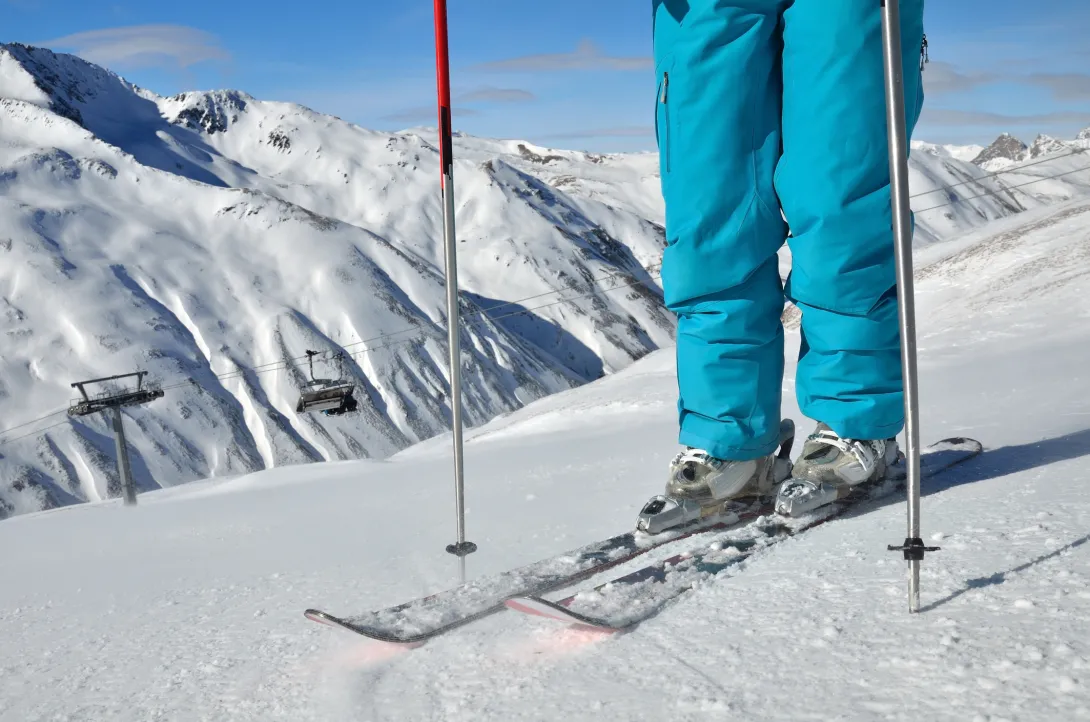
Advantages of Using Long Skis
Stability & Control
Short skis offer more stability and control when traveling at lower speeds where long skis offer more stability and control when traveling at higher speeds. Long skis are able to gain momentum easier when traveling down the mountain.
They are heavier, and also tend to be both wider and stiffer than short skis, which offers more stability at higher speeds and makes them easier to control than long skis.
Due to the fact that powder is more airy than hard snow, the smaller weight distribution makes shorter skis sink in it. Long skis have a greater surface area than short skis, allowing them to float and glide more easily when skiing in powder or deeper snow.
They are also able to cut through choppy snow easier, making them the perfect ski for backcountry terrain.
Support
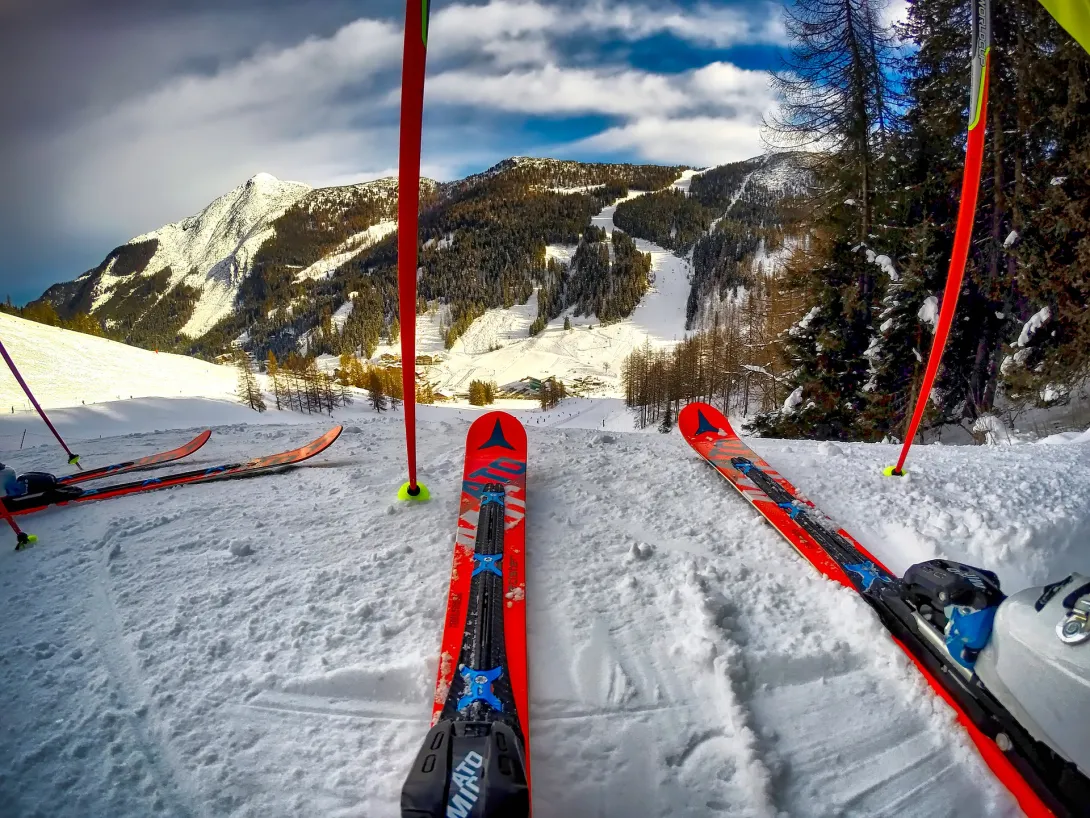
Longer skis have better weight distribution, are wider, and made out of a stiffer material than short skis are, which is more supportive for the skier.
This also allows them to have less drag than a shorter ski.
Disadvantages of Using Long Skis
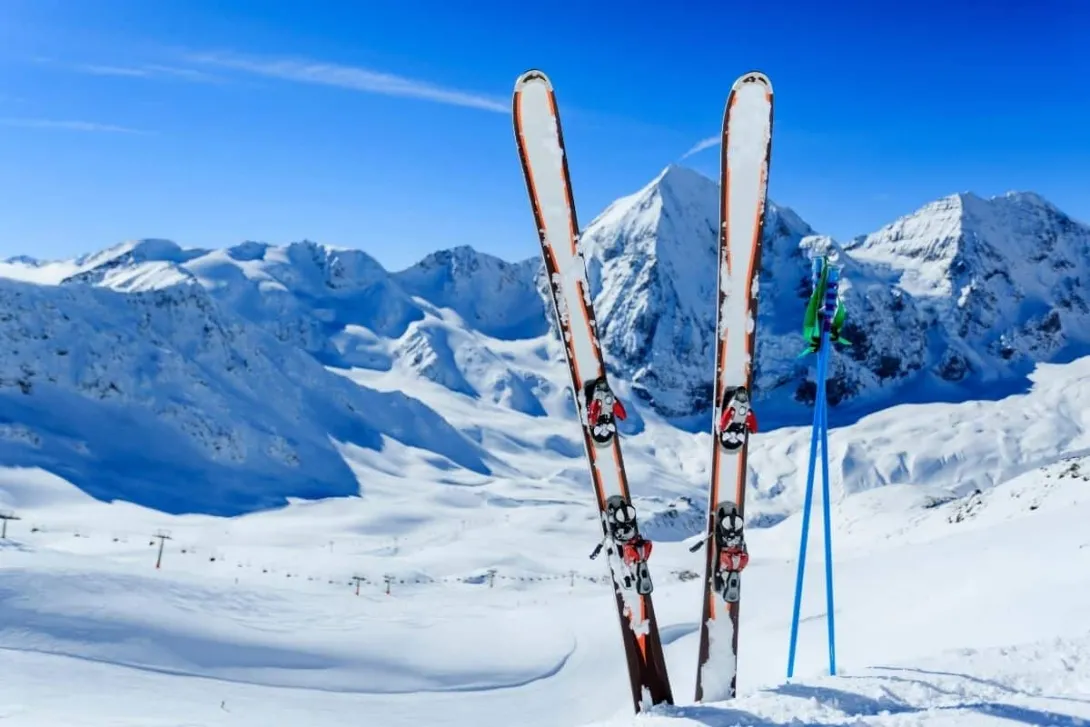
Long skis are more difficult to control at slower speeds. This makes it easier to cause injury if you transition to a longer ski before you are comfortable.
The main disadvantage of long skis is that they have a longer turning radius, meaning it physically takes more strength and time to swing around. This can be tougher for beginners who need their skis to be able to react quickly.
This isn’t always a bad thing though, as it makes it easier to make S-shaped turns and helps people feel more stable when turning at high speeds.
Who Should Use Long Skis
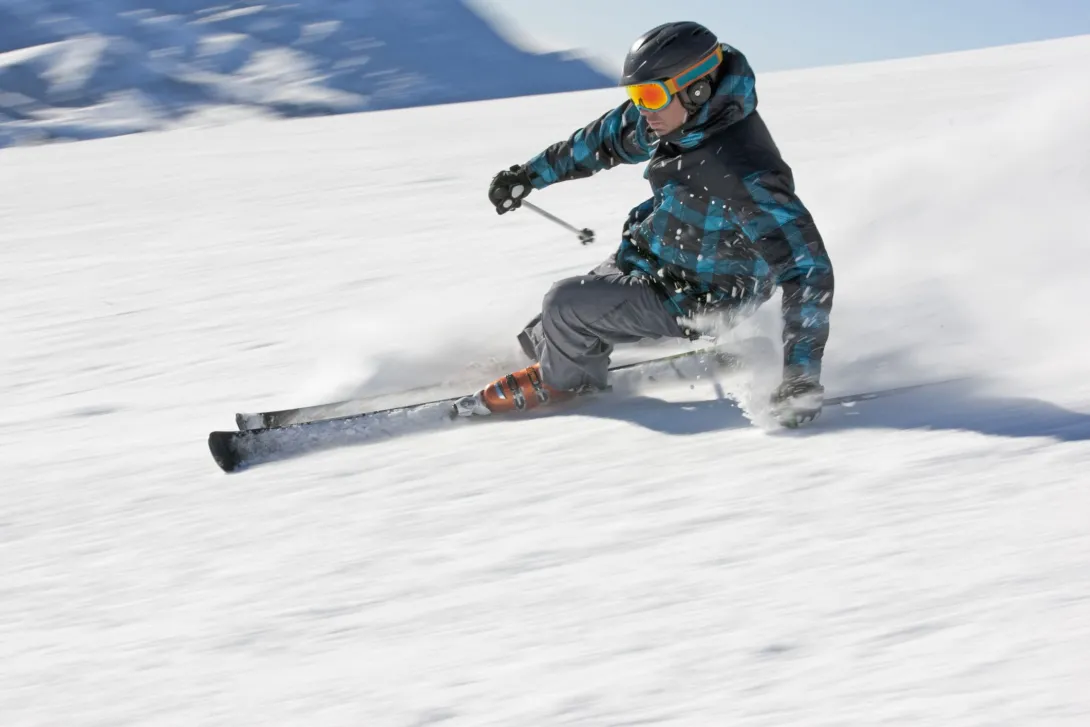
If you’re currently using shorter skis, feel comfortable in them, and want to start skiing faster, it’s time to start considering transitioning to a longer ski. Longer skis will allow you to maintain stability as you pick up speed and are better for skiing powder or deeper snow. You should use long skis if:
- You like to ski fast
- You like to ski aggressively
- You like to ski in deep powder or open terrain
How To Choose The Proper Length of Ski
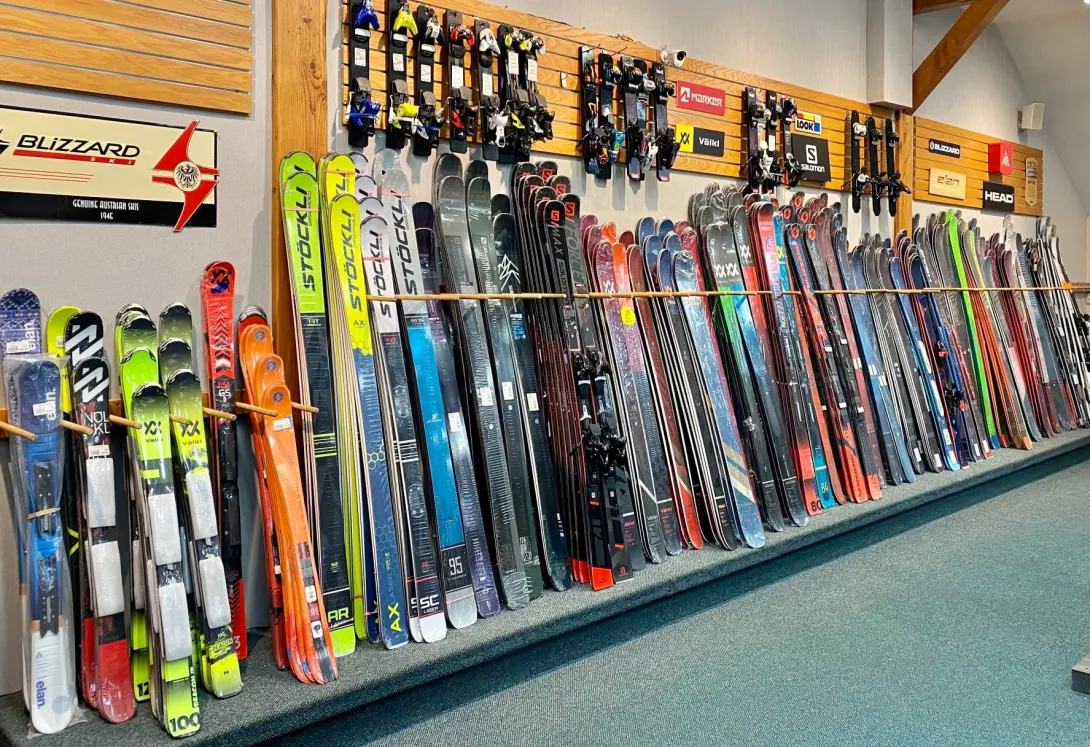
Now that you know the difference between the two lengths of skis, how do you know which one to buy for yourself? There’s no perfect formula for buying the right skis as it depends on your style of skiing, your experience level, and the way you want them to feel.
If you’re just getting started, a shorter ski is more optimal. As we stated above, short skis are able to maintain stability at slower speeds much easier, making them easier to learn how to control.
Short skis allow you to respond quicker, which is great if you need to avoid a person, tree, or other obstacle as you’re riding down the mountain. They also have a shorter turning radius, making it easier to turn. All in all, short skis are best for those just starting out and are looking to get comfortable on skis.
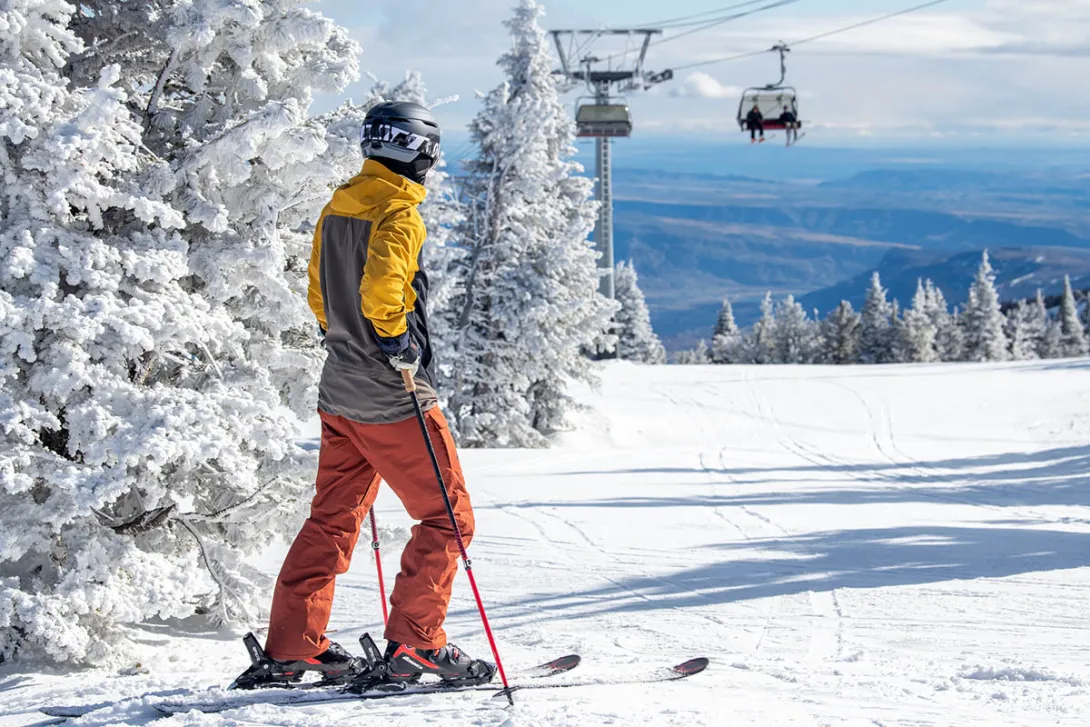
When shopping for your skis, a good rule of thumb is that it should hit between your chest and chin when standing up. You also want something more narrow in width and more flexible. These will allow you to feel comfortable learning the basics on-piste and even help you transition into some powder.
If you’re a more advanced skier who likes to ski in deep powder or if you prefer to ski more in the backcountry, you’ll want a longer ski. If you feel comfortable in your shorter skis and are looking to start skiing faster, this is also the perfect time to switch to a longer ski.
When shopping for longer skis, a good rule of thumb is to have them be between your chin and nose when standing up. Longer skis also tend to be stiffer and wider, making them more stable on tougher terrain.
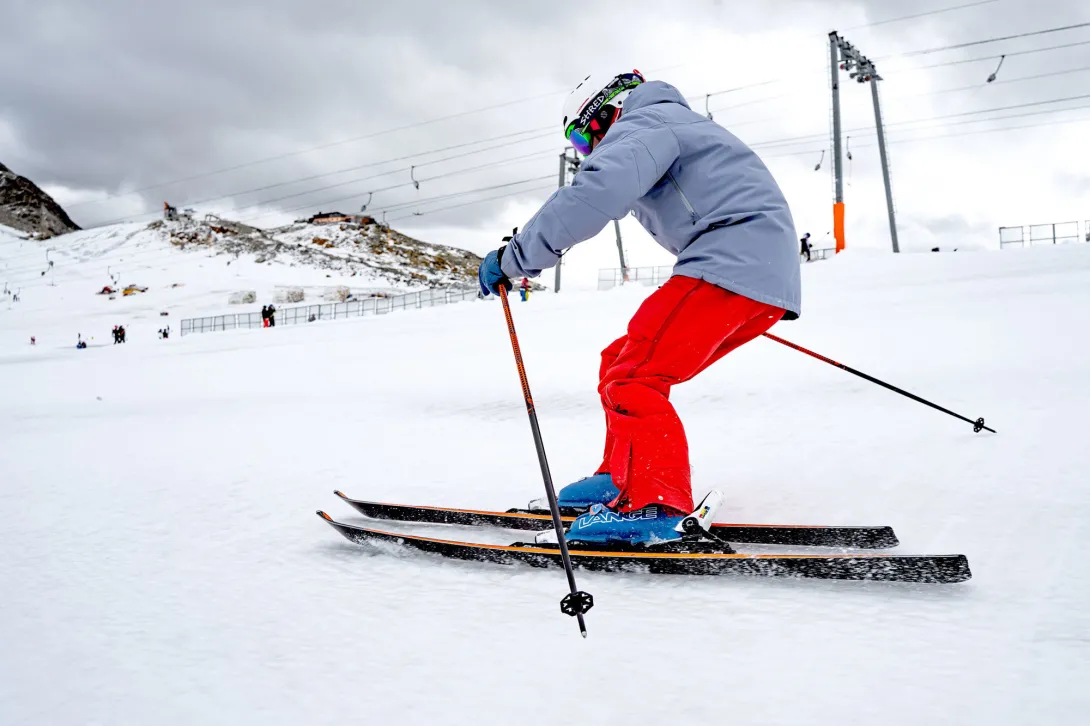
As always, we recommend trying out different skis by renting them before you commit to making a purchase. Take your time getting comfortable and feeling out different types and lengths of skis.
Choosing the right pair of skis will allow you to have better control of them meaning you only need to focus on perfecting your technique, and will allow you to feel more confident and free on the mountain!

